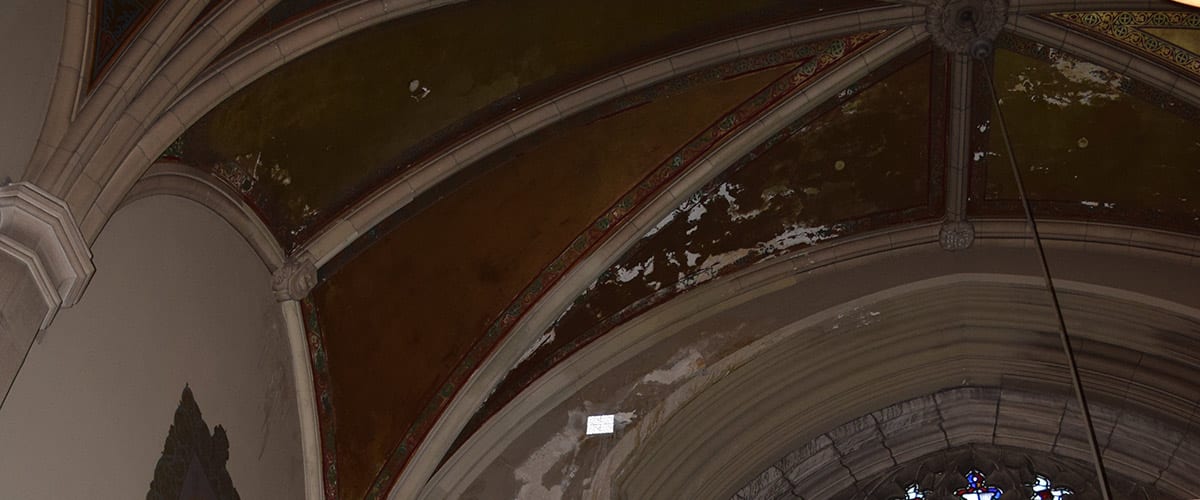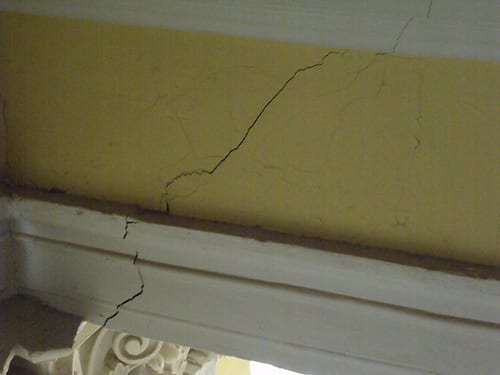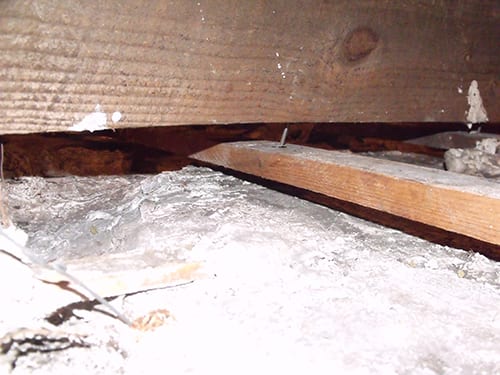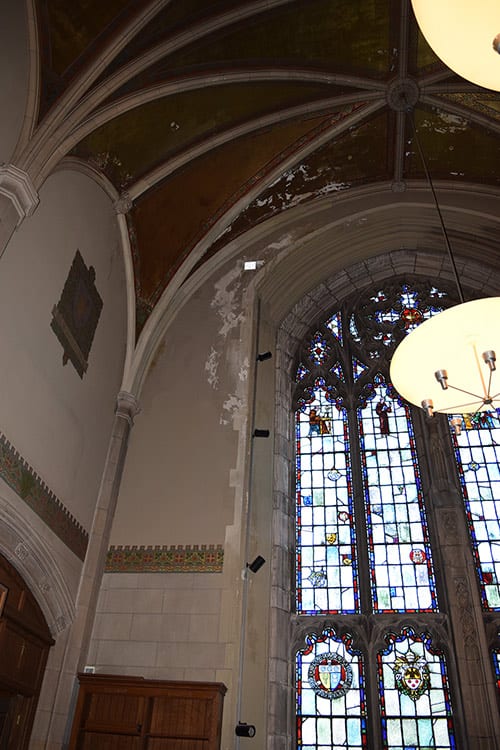Top Causes of Cracks in Historic Plaster Ceilings

Common and often very visible, cracks in plaster ceilings seem an inevitability in older, historic buildings. Not all cracks are the same and some will continue to return if the root cause is not properly remedied. Once underlying issues are resolved, plaster can be restored in the typical fashion, unless extenuating circumstances prevent this. Cracks can occur due to problems that are difficult to rectify, such as uneven distribution of load; In such cases, adjusting application techniques and plaster mix can help minimize future cracking. The following are some of the most common reasons for cracks to start forming in historic plaster ceilings.

Overloading
Settlement of the Building
Buildings often find there place over time, shifting stubbly in different directions over decades and centuries. As the building moves, pliable surfaces move with the building, while rigid and bridle surfaces crack and crumble.
- Overloading— usually manifesting as diagonal stress cracks, these marks are common around door or window frames but can also be found on a ceiling near corners or loadbearing columns. Since historic architects and craftsmen did not possess modern day means by which to accurately determine the weight of each floor and model how this weight would be distributed or “deflect”, their inaccurate guess for load distribution commonly results in large cracks. This problem is compounded by movement or detachment of the lath and general “sagging”. Since adjusting load distribution would require invasive reworking of beams and columns, repairs often center on reinforcing plaster to prevent further damage.
- Lath movement— when the base material, “lath”, separates from the plaster, or nails securing the lath to studs become loosened, stress cracks become evident across the plaster surface. This can be fixed be either completely removing the plaster and re-securing the lath to the structure, or by carefully injecting a binding resin to secure it. The surface is then covered with a wire mess and plastered over to produce a flat surface.
- Settlement/vibrations—sudden changes in the distribution of the structure’s weight can occur without provocation, but often moving heavy furniture on the floor above, or seismic activity is the culprit. Damage to the structurally integrity like rot to wooden beams in the ceiling, or rusting/disintegrating metal nails securing beams to the walls prompt the core supports of the structure to move. Cracks on load-bearing walls and adjacent ceilings are especially common.
- Renovations elsewhere in building—it is important to note that renovations or additions to historic homes often cause unforeseen consequences throughout the historic structure. Shifting and new load distribution can cause cracks and plaster chipping. Adding additional floors causes more downward weight, causing cracks to form in the ceiling where columns and beams meet.

Lath-Movement
Water Damage
Though water is an essential part of the plaster mix, humidity, leaks, and floods will cause irreversible damage to plaster finishes. When water is involved, it is best to get help early to ensure that there is no structural damage and that mold does not start growing.
- Humid climate—moisture rich air is bad in historic buildings for a number of reasons. Moisture can directly interact with plaster—this is especially true with lime plaster—causing it expand, or prevent it from fully drying when initially applied. High humidity environments can cause wood supports to undergo expansion and contraction during temperature/humidity swings. Even small amounts of expansion can have lasting effects on the validity of plaster long-term.
- Leaking roof—incredibly common, roofs leaks are one of the leading causes of damage to plaster. Historic plaster applications are more susceptible to water as they do not benefit for modern compounds found it gypsum board and binding epoxy. Repairs should be carried out once the cause of the leak has been repaired fully, to prevent recurring damage. Often, the plaster section will need to be fully removed, inspected, and dried prior to any restoration work commencing.
- Flood from floor above—while the bathtub falling through the ceiling might seem like something out of a movie, leaking pipes and overflowing water can destroy plaster ceilings and weaken the structural integrity of a building. Soaked beams can expand when wet, contact when dry, and grow mold/bacteria—these three conditions will ruin plaster and have potential health ramifications if not treated by a professional.

Water-Damage
Building Age
Plastered surfaces in older buildings are prone to drying out and other age-related problems. Ensuring that repairs take into account relevant historical context will prevent further damage and might help produce a new plaster surface that can outlast the original.
- Dried out base layer—overtime plaster will dry out. Given that historic buildings only benefited from central temperature control in recent decades, much of the plastered surface’s life was spend with volatile temperature swings. Conversely, temperature control can also act to dry out plaster faster, usually drying it all the way down to the scratch layer. Damage that deep would result in the entire plaster application crumbling and separating from the lath.
- Mixture of local materials not suited for longevity—colonists were resourceful people. Often, the New World did not boast all the essential building materials colonists were accustom to having, this resulted in some interesting plaster compounds being mixed using local ingredients—shells, granite, bone… though similar to traditional mixes, these improvisational mixtures based on proximal availability do not stand the test of time. Cracks, sagging due to expansion/contraction, and chips are all common.
Plaster ceilings are difficult to reach and are not a simple repair. Detaching lath and movement of structural supports typically requires invasive means to correct. Similarly, water damage is not a simple fix and can have lasting implications if it is not remedied quickly and correctly, by a professional. The cause of ceiling cracks listed above cannot be filled with putty, or quickly patched—an expert is needed to assess the cause and develop a treatment plan. If you are dealing with plaster issues, a plaster conditions survey maybe required. Using a professional that specializes in historic plaster services is the best path to take in resolving the issues.
